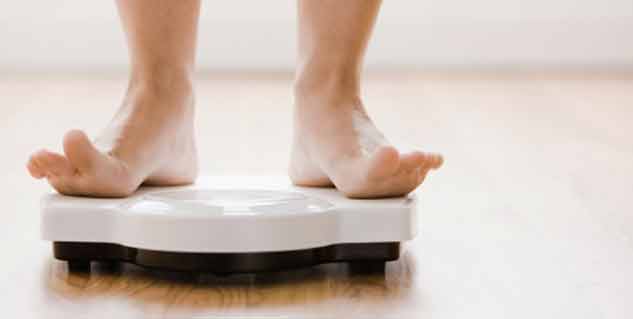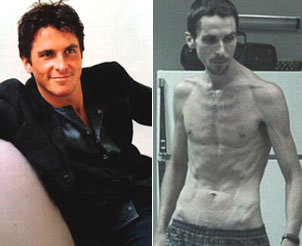What’s the best eating plan?
If you have been overweight for some time, you’ve probably tried many diets and are unclear as to how to lose the weight and keep it off without feeling hungry or deprived. There seems to always be debate and controversy surrounding the issue of diet. Which is the correct eating plan? Should you follow a high protein or low to moderate protein eating plan? Are carbohydrates okay to eat or should you restrict them? How much fat should you eat and what types? Is it okay to eat animal products, including dairy and eggs or should you cut them out and follow a vegetarian eating plan? What information can you trust since it seems to be constantly changing? Decades of cultural diet mentality and the over-consumption of calorie-rich animal and man-made processed foods have disconnected many of us from our intuitive body wisdom.
There is one thing that most of the experts agree upon: our modern diet is a far cry from the more whole-foods diet of our ancestors. Over time, our diet has been slowly increasing in high-fat animal foods (sausage, bacon, franks and ribs), highly-refined processed carbohydrates (cakes, chips, pastries, cookies and candy) and foods artificially concentrated in proteins, fats and sugars and deficient in plant fiber (many meats and “mock meats”, dairy products, protein bars, etc.)
We are consuming less plant food than ever before in our history. Our nomadic ancestors were constantly on the move and they ate a lot of wild plant food full of fiber. Plant foods provide our bodies with all the essential nutrients needed—amino acids, essential fatty acids, carbohydrates, phytochemicals, vitamins and minerals. We can maintain our best health and optimum weight by consuming at least 30 grams of fiber each day. Fiber helps to fill you up and turn off your appetite. Did you know that plant-eating animals our size in nature eat 30 to 90 grams or more of fiber per day?
Our body chemistry and body signals (like hunger, cravings and fullness) get thrown off when we consume a low-fiber diet filled with unnatural high-fat animal foods and processed man-made foods. Our modern diet and convenience-focused lifestyle has come with a high price: food addiction and degenerative diseases which include heart disease, diabetes, hypertension, gall and kidney stones, osteoporosis, cancer and obesity.
So what’s the best eating plan? One that includes natural whole fiber-filled foods like fresh vegetables, fresh fruits, whole grains, legumes (beans and lentils), potatoes, nuts and seeds. On a whole foods eating plan you don’t have to concern yourself with the amount of protein or carbohydrate. Because you eat foods raw, in their natural state, or lightly cooked (without added oils, which are not natural at all, despite what you’ve been told) there is no need to count calories or grams or weigh and measure food. When you eat whole foods, you work with your body as opposed to against it. You can trust your intuitive body wisdom to guide you to eat, select the right foods and stop eating when you’ve had enough. You can eat as much as you like and still lose weight effortlessly, without feeling hungry. The only area you may have to watch is your intake of high-fat wholesome foods like nuts, avocados and olives—in nature, you wouldn’t have these foods in quantity and you’d have to work hard to obtain them.
It’s not always easy to change habits many years in the making, especially if many of your favorite comfort foods are high-fat animal foods and refined, processed man-made foods. When you’re used to eating foods high in fat, sugar and salt, natural foods can seem plain and boring. But as you slowly add more natural whole foods to your diet, these foods will shift your palate and chemistry. Changing your diet and releasing foods that no longer serve your body then becomes easy and effortless.
You can make the transition to a natural whole foods eating plan in just five easy steps:
Step 1: Increase your intake of fresh fruits and vegetables. Choose whole raw fruit over fruit juices and be sure to include calcium-rich dark green vegetables like broccoli and kale as well as starchy vegetables like carrots, squashes, corn, potatoes and pumpkin.
Step 2: Increase your intake of legumes, such as beans, peas and lentils. This group also includes soybeans and chick-peas. You can add these to soups and salads.
Step 3: Increase your intake of whole, unprocessed grains while you reduce your intake of refined, processed grain products. Whole grains such as brown rice, oat groats, barley, bulgur and quinoa are rich in fiber, protein, B vitamins and zinc. As you add more whole grains to your diet, it becomes easier to “let go” of the refined flour products like crackers, bagels, cereals, cookies, cakes and muffins.
Step 4: Reduce or eliminate red meat, poultry and fish. Animal foods contain cholesterol, have no fiber and many are high in fat and saturated fat. Meat, poultry and dairy products are often full of antibiotics and hormones and many fish are full of mercury and other toxic chemicals.
Step 5: Reduce or eliminate your intake of dairy products, artificial fats and cooking oils. Try substituting with non-dairy alternatives like soy, rice, almond and oat milks. Fat-free dressings, salsa and oil-free hummus are good alternatives. Try cooking with seasoned broth rather than oils.
Many of the foods you already enjoy are natural whole foods. Try adding one new food per week, or a few vegetarian meals per week. There are many wonderful cookbooks available in bookstores and whole food stores. There are also many vegan and vegetarian restaurants to try.
Go at your own pace as you add wholesome foods to your diet. There is no rush in transitioning to a whole foods eating plan. Keep in mind that the best eating plan for you is a plan that you can stick with. Bon appetite!
Posted in overeating, dieting, weight loss | Tags: comfort eating, dairy products, dieting, emotional eating, fiber, overeating, overweight, plant foods, refined processed foods, whole foods eating plan
-
How I Easily Lost 21 Lbs In Just Weeks Without Getting Hungry
I was shocked. I started to cry...After the holidays, I stepped on the
-
Explaining the Controversial Fast Diet
America’s obsession with the diet began as far back as 1863. Th
-
Are You Currently Attempting To Lose Weight? These Pointers Will Allow You To Succeed!
Copyright (c) 2014 M Noor A super-fanta
-
Close Kept Secrets To Weight Loss Lesson 47
Im always so in awe of the synchronicity of things. When we let thing
-
Am I Too Fat To ... ?
-
Discover the Benefits of Green Tea
Do you know, the people around the world searching the term Green
- DON'T MISS
- Managing Your Diabetes On A Picnic
- Finding The Right Weight Loss Programs
- High-density lipoprotein (HDL), good cholesterol protects against heart disease and atherosclerosis
- 7 Things I Always Tell My Patients Who Want To Lose Weight
- Natural Weight Loss Plan For Health
- The 4 Simple Steps I Took To Lose 30 Pounds
- Keep Your Health Intact By Losing Weight Quickly
- How To Lose Weight And Feel Great!
- Numbers Don't Lie, Put Weight Loss into Perspective for Fast Results
- How I Lost 65 Pounds (And Actually Had Fun Along The Way)




